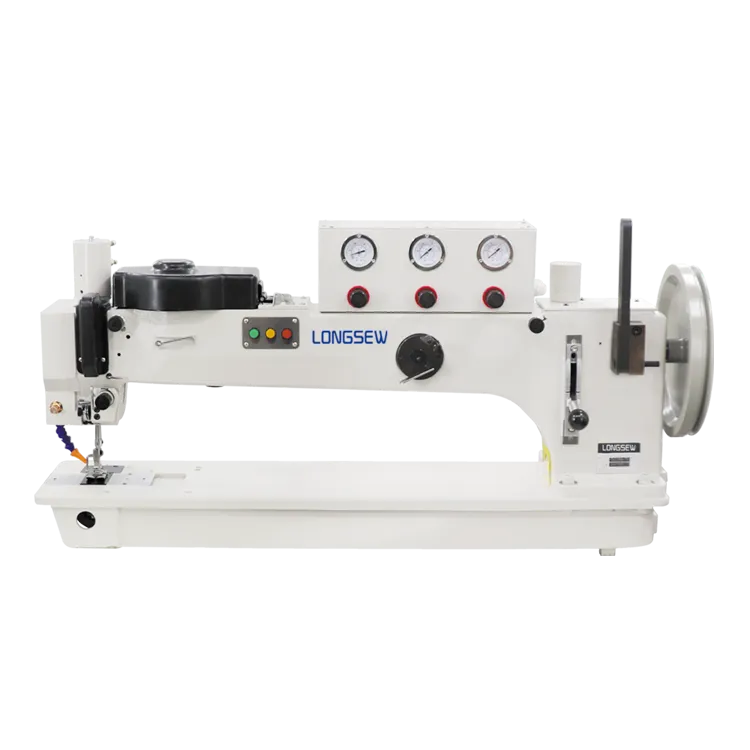Different Variants of Lockstitch Sewing Machines Explained
Types of Lockstitch Sewing Machines
Lockstitch sewing machines are among the most prevalent types of sewing machines used in the textile industry and for home sewing. They work by using a needle and a bobbin to create a lockstitch, where the needle thread interlocks with the bobbin thread, resulting in a strong and durable stitch. This mechanism is foundational for a variety of sewing tasks, including garment construction, quilting, and home décor projects. Below, we will explore the different types of lockstitch sewing machines, their features, and the applications they are best suited for.
1. Mechanical Lockstitch Sewing Machines
Mechanical lockstitch sewing machines are often used by beginners and those who prefer simplicity. These machines operate through a series of mechanical components, such as gears and levers, which provide a straightforward sewing experience. They typically have basic features, including a single stitch type, a foot pedal, and limited stitch adjustments.
While mechanical machines may lack the advanced functionalities of computerized options, they are incredibly reliable and easy to maintain. Their straightforward design allows users to become proficient in sewing without the need for extensive training. They are ideal for basic sewing tasks, such as hemming and repairs, making them a popular choice for hobbyists.
2. Electronic Lockstitch Sewing Machines
Electronic lockstitch sewing machines introduce features that enhance the sewing experience without overwhelming users with complexity. They often offer a wider variety of stitch options, including decorative stitches and buttonhole settings. Users can adjust stitch length and width at the push of a button, and some models include automatic needle threading, making the sewing process more efficient.
These machines are a great transitional choice for sewers who are moving beyond basic projects. They maintain the reliability of mechanical machines while adding convenience and versatility. This makes them suitable for a broader range of sewing applications, from home sewing projects to light commercial work.
types of lockstitch sewing machine

3. Computerized Lockstitch Sewing Machines
Computerized lockstitch sewing machines are high-tech machines that provide a vast array of features and options. Equipped with a digital interface, these machines allow users to select from hundreds of stitches, including complex patterns and designs. Many models come with built-in memory to save custom stitch combinations, which can be particularly useful for advanced sewing projects.
Moreover, computerized machines often include features like automatic tension adjustment, which helps maintain consistent stitch quality regardless of fabric type. They may also offer advanced functionalities such as embroidery capabilities and USB connectivity for importing designs. However, while these machines are incredibly versatile and powerful, they may require a learning curve to master their features fully.
4. Industrial Lockstitch Sewing Machines
Industrial lockstitch sewing machines are designed for heavy-duty use in manufacturing environments. These machines are built to operate at high speeds and are extremely durable, making them ideal for large-scale production. Industrial machines usually feature a more robust motor, allowing them to stitch through multiple layers of fabric with ease.
These machines may vary in design, including walking foot models for handling thick materials and specialized machines for specific tasks, like quilting or garment assembly. They are crucial for businesses that require efficiency and precision, such as clothing manufacturers and upholstery shops.
Conclusion
Lockstitch sewing machines play an essential role in the world of sewing, catering to all levels of expertise and a variety of applications. From simple mechanical machines to advanced computerized versions and robust industrial models, each type offers unique features tailored to specific needs. Whether you’re a beginner starting on simple projects or a professional immersed in high-volume production, understanding the differences among these machines can help you select the right one for your sewing endeavors. With the right lockstitch sewing machine, you can bring your creative visions to life, one stitch at a time.
-
Zigzag Sewing MachineNewsMay.12,2025
-
Single Needle Sewing MachineNewsMay.12,2025
-
Overlock Sewing Machine PriceNewsMay.12,2025
-
Heavy Duty Industrial Sewing MachineNewsMay.12,2025
-
FIBC Sewing MachineNewsMay.12,2025
-
Cylinder Bed Sewing MachineNewsMay.12,2025
-
Revolutionizing Sewing with CNC TechnologyNewsMar.28,2025





























